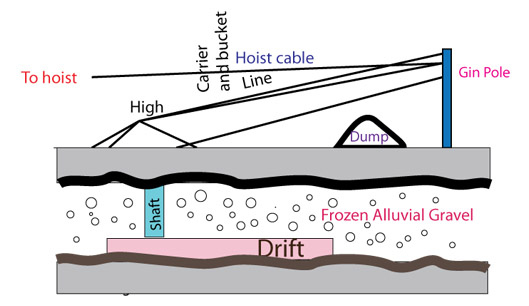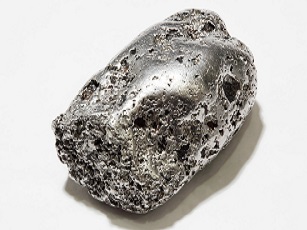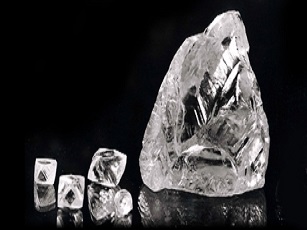Shaft Mining
Shaft Mining:
Shaft mining is a form of underground mining where shafts are pushed vertically from top to bottom to excavate the ores and minerals. It is also called shaft sinking. It is best suited for concentrated minerals such as iron, coal, etc. which can be found at the depth of the earth's surface. It is found mostly all over the world. Shaft sinking refers to shallow shafts and it is different from a deep shaft. The former is sunk for the civil engineering projects and the latter is sunk for the mining projects. When the excavation is done on the ground surface, it is called a shaft and if it is on the underground it is called a sub-shaft. This is also known by the name Winze.

This mine is allotted with different compartments. The main compartment which is called a central compartment is used as a lift or an elevator for the workers and the equipments to be transported in and out of the mine. A secondary compartment is used to transport the extracted ores and other materials out of the mines. Last but not the least a third shaft is reserved as an emergency exit. It is also used to transport all kinds of pipes, water, fuels etc.
The shaft is either inclined or vertical. However, most modern shafts are vertical .To excavate the ore from the depths and with ground conditions favorable shafts are raised from the bottom to the top. This is called borehole shafts. Raise boring is a method by which small shafts are taken out of an existing mine as long as there is access at the bottom. Shaft sinking is one of the dangerous forms of mining and involves a lot of risk. This method is now mainly carried out in Canada and South Africa.
Off-shaft access:
It is necessary to take into consideration the capability of the mine shaft to penetrate deep into underground mining. The process by which the horizontal working off the shaft is referred to as drifts, galleries or levels. It spreads from the central shaft towards the place where the ore is available in abundance. The exact place where the shaft and these levels meet is called the inset, shaft station or plat.
Surface facilities:
The surface over the shaft is occupied by a building called the head frame. Depending upon the capacity of the device used the top of the frame will have to either a hoist motor or a sheave wheel. The ore extracted is stored in a bin provided in the head frame and this ore is moved to the dealing out facility. The shaft is used for many purposes. If it is used for ventilation of the mine a plenum or casing is combined with the head frame to allow the proper flow of air in and out of the mine.
Shaft lining:
Several important functions are performed by shaft lining. This lining acts as a safety layer preventing the fall of loose or unstable rocks into the shaft. It is also a place for shaft sets to be bolted into and it is a smooth surface to allow free flow of air for ventilation. Shaft lining is almost always dependent on the geology of the rock. In rocks where no support is needed for opening, shaft lining has no role to play.
In North America and South America smaller shafts are used which is rectangular in shape and larger ones are round with concrete lining. Several materials are used to line the shaft like shotcrete, fibrecrete, brick, cast iron tubing and concrete segments. Under specific circumstances materials like bitumen and squash balls are also used. When circumstances are extreme, liners consisting of two or more materials are required. The shaft liner during sinking does not reach the bottom of the shaft and stays away at a distance before reaching the spot. The distance to be covered is determined by the methodology of excavation. The safety of the workers is also taken care by installing temporary ground support consisting of welded mesh and rock bolts. The most challenging part is the installation of temporary ground support. This is done by pneumatic powered rock drills. Due to this number of workers working on the shaft bottom is minimized. As a result many projects are depending on shotcrete for this temporary lining. Even robotic application of shotcrete is being considered.
Shaft compartments:
Shafts are usually split into compartments when it is used for hoisting. They are divided into multiple compartments that are made either of timber or steel. Shaft sets are either vertical or horizontal. Vertical members are called Guides or horizontal members are called Buntons. Hollow structural sections and top hat sections are the two main options for steel shaft guides. Top hat sections have more advantages than hollow structural sections. It includes simpler installation, increased stiffness and it is also more resistant to corrosion. Wire ropes also referred to as Guide ropes are used instead of guide beams as they are easy to replace and also to maintain.
The largest compartment is used for moving workers and the minerals extracted from the mines. They bear a close resemblance to the elevators. In order to avoid any emergency the cages may be single, double or even triple deck. In case of unexpected failure, they can make use of this safety system. The second compartment is used to hoist the ores to the surface. The third one is used for an emergency exit .This may have an additional cage or ladders .This is used for moving pipes, cable, transfer of water, compressed air, diesel fuel, etc.
Ventilation is very necessary during the entire mining process and this is why the shafts are divided into compartments. These compartments are also used for the intake of air and also it may be used for the air to be exhausted. Even though many safety measures are taken to avoid all risk factors, it is advisable to have an alternate route to exit the mines. The shaft and the compartments are so closely connected and any problem in the shaft may affect the compartment.











